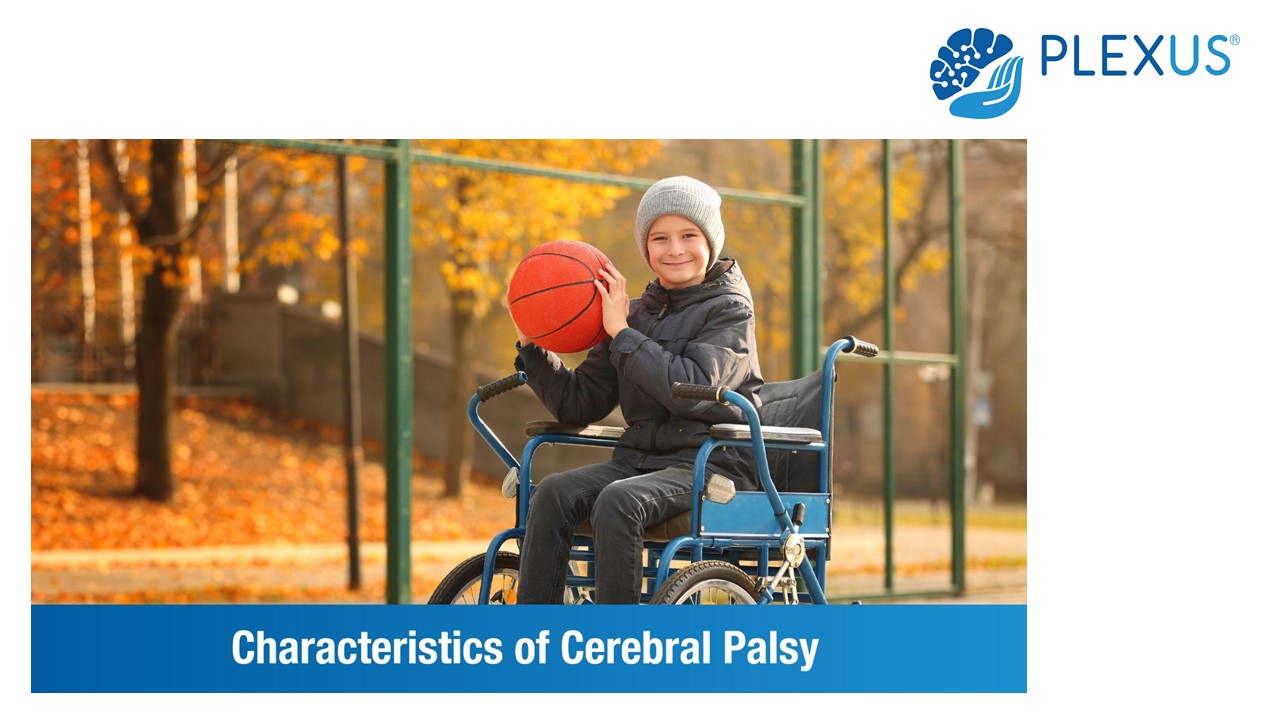Characteristics of Cerebral Palsy - PowerPoint PPT Presentation
Title:
Characteristics of Cerebral Palsy
Description:
Cerebral Palsy (CP) is a group of non-progressive neurological disorders that impacts the child’s posture, sense of balance, mobility, muscle strength, and gait. It is caused by abnormal brain development or irreparable damage to the immature and developing brain (during pregnancy or shortly after birth). – PowerPoint PPT presentation
Number of Views:14
Title: Characteristics of Cerebral Palsy
1
(No Transcript)
2
What is Cerebral Palsy?
- Cerebral Palsy (CP) is a group of non-progressive
neurological disorders that impacts the childs
posture, sense of balance, mobility, muscle
strength, and gait. - It is caused by abnormal brain development or
irreparable damage to the immature and developing
brain (during pregnancy or shortly after birth).
3
The distinguishing features
- Impaired gait and uncoordinated movement are the
main features that set CP apart from other
neurological disorders. - CP is a non-degenerative disorder. Its symptoms
do not worsen with time. - Nevertheless, early diagnosis and intervention
can go a long way in the child leading a better
and fuller life. CP can be detected as early as a
few months after birth or even at 4 years of age.
4
Types of Cerebral Palsy
- CP impairs the brains ability to move muscle.
This leads to flaccid muscles, poor motor
coordination, impaired reflexes, balance issues,
incorrect posture, involuntary movements, etc.
The degree of mobility challenges depends on the
type of CP your child has been diagnosed with.
The six types of CP are - Spastic Cerebral Palsy
- Dystonic Cerebral Palsy
- Hypotonic Cerebral Palsy
- Athetoid Cerebral Palsy
- Ataxic Cerebral Palsy
- Mixed Cerebral Palsy
5
Types of Cerebral Palsy
- SPASTIC CEREBRAL PALSY is the most most common
type of CP. It occurs due to damage in the
brains motor cortex. Its characteristics
include - Trouble lifting ones head as a baby
- Tightened muscles due to increased muscle tone
- Rigidity and stiffness in the limbs
- Exaggerated movements
- Difficulties with breathing, speaking, and
swallowing - Hoarse voice
- Scoliosis (dislocation of the spine)
- Limb and joint deformities
- Difficulty with fine motor skills
- Scissored gait
- Drooling
6
Types of Cerebral Palsy
- DYSTONIC CEREBRAL PALSY is a subtype which occurs
due to damage to the basal ganglia, the centre
for learning and motor function. Dystonic CP is
further divided into - Focal dystonia one side of the body is impacted
- Generalised dystonia entire (or almost entire)
body is affected - Hermidystonia impacts one arm and corresponding
leg - Cervical dystonia affects shoulder, neck, and
head - Oromandibular dystonia affects mouth, tongue,
and jaw
7
Types of Cerebral Palsy
- Dystonic CP has the following characteristics
- Movements that alternate between fast and slow
- Involuntary movements that get worse if the child
tries to control them - Gait problems
- Painful movements and contractions
- Clumsiness
- Speech and swallowing difficulties
- Foot cramps
- Drooling
- Uncontrollable blinking
- Fatigue due to uncontrollable movements
8
Types of Cerebral Palsy
- HYPOTONIC CEREBRAL PALSY is a rare variant of CP
and accounts for only 2.6 of all the cases. The
damage to the cerebellum severely affects muscle
tone, leading to overly flaccid and floppy
muscles. Its characteristics include - Unusually flexible joints and ligaments
- Excess muscle flexibility
- Poor trunk stability
- Unusually wide gait
- Poor head control
- Clumsiness
- Slow reflexes
- Exhaustion
- Chewing and swallowing difficulties
- Making grunting, breathy noises
- Learning disabilities
- Cognitive delays
9
Types of Cerebral Palsy
- ATHETOID CEREBRAL PALSY affects the childs
muscle causing them to fluctuate between
hypotonia and hypertonia. The damage to the basal
ganglia and/or cerebellum impacts is
charactertised by - Involuntary movements in the legs, arms, and
hands - Slow writhing movements that are repetitive and
rhythmic - Jerky, shaky movements
- Twisting of the torso
- Abnormal posture
- Grimacing or drooling
- Poor balance and coordination
10
Types of Cerebral Palsy
- ATAXIC CEREBRAL PALSY is a rare non-spastic
variation of CP. It occurs due to damage to the
cerebellum. It is characterised by - Low muscle tone
- Involuntary movements that can be slow, fast,
rhythmic, repetitive, or non-repetitive - Exaggerated movements when the patient attempts
to move voluntarily - Poor balance and posture
- Unsteady gait
- Poor control over eye movements and depth
perception - Poor hand-eye coordination
- Impaired fine motor skills like handwriting
11
Types of Cerebral Palsy
- MIXED CEREBRAL PALSY occurs when there is damage
to more than one part of the brain, including the
motor cortex, basal ganglia, cerebellum, and
pyramidal tracts. - Patients with mixed CP can experience symptoms of
more than one of the above 5 types of CP. - The most common type is Spastic-Dyskinetic
Cerebral Palsy. - Mixed CP accounts for nearly 15.4 of all the CP
cases. - Its characteristics and symptoms depend on the
types of CP - damage to the brain and its
severity.
12
Treatment and care
- Founded by Indias foremost neurologist, Dr
Naeem Sadiq, Plexus offers the best treatment
for Cerebral Palsy through our rehabilitation
program. This is an all-inclusive treatment plan
that is based on your childs symptoms, needs,
and their ambitions. Our highly-trained
specialists work with you and your child to
design a custom rehabilitation plan that eases
symptoms, maximises daily independence, and
enhances quality of life.
13
Treatment for CP includes
- Physiotherapy Occupational therapy Speech and
language therapy Cognitive therapy - Developmental therapy Reflex integration
therapy Early intervention therapy - Postural training Gait training Activities
for daily living training - Pre-academic skills training Hand function
training Corrective splinting Mobility aids - Mirror therapy Contracture release therapy
Constraint-induced movement therapy - Stem cell therapy Medication and/or surgery































